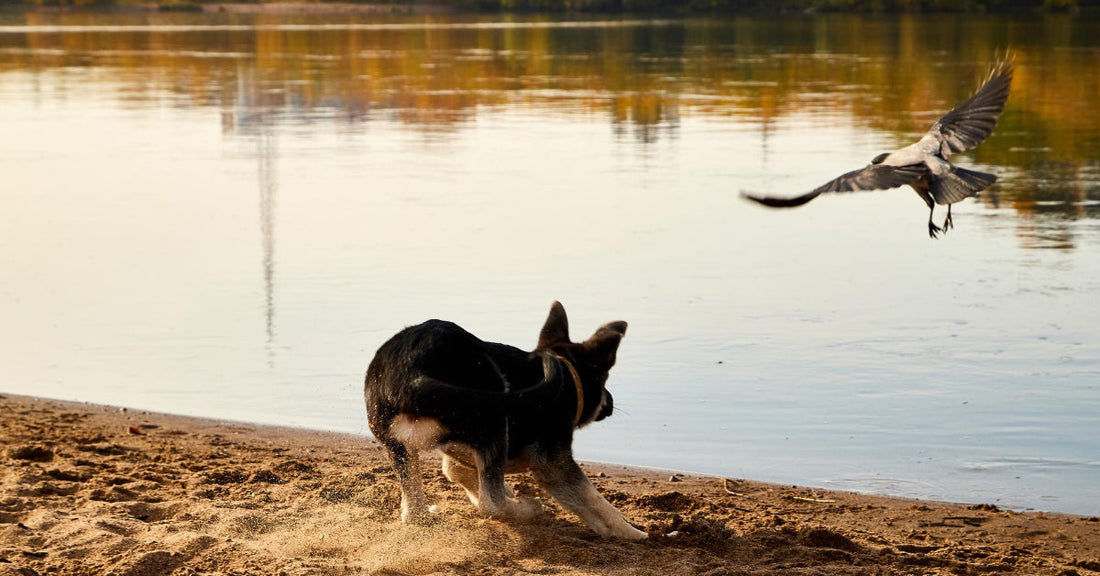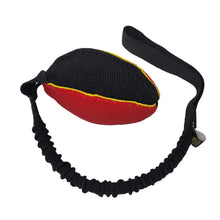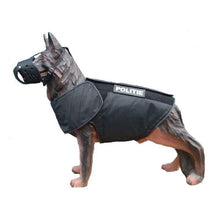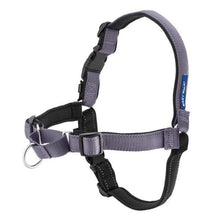How To Prevent Your Dog From Killing Wildlife

We recently had a subscriber who had an issue with their dog killing wildlife. This is a concern that many of our readers have, especially ones who live out in the countryside. Today we'll go over why dogs often do this, the hazards that are associated with it, and how to prevent it.
The question of why
A dog’s personality is largely made up of different driving factors that are unironically called drives. One of those drives that play a huge part in herding and protection work, jobs that German Shepherd Dogs excel in, is prey drive.

Unfortunately, unchecked prey drive is directly responsible for a dog’s drive to want to hunt, chase, and kill prey. When a dog is herding sheep, in its head, it's hunting them. When a police dog is chasing a felony suspect, again, in its head when it begins the chase, it's hunting. In other words, one of the biggest factors that make the German Shepherd Dog a premier working dog is prey drive. They're born with it. The more they have, the better of a working dog they will be.
It might sound hopeless now, since dogs are indeed born with prey drive, and German Shepherd Dogs tend to have more of it than most. But don't get too worried just yet. Remember, they herd sheep without killing them or drawing blood, so there are things you can do to prevent it that we will discuss later.

Hazards and issues that come with killing wildlife
Before we get to prevent the behavior, we need to understand the hazards of the behavior and why prevention is important. Some consequences come from our pets harming wildlife. And some can go as far as to affect your health. Let’s talk about a few diseases that dogs can get from predating on wildlife.
● Anaplasmosis is a tick-borne disease caused by the Anaplasma phagocytophilum bacteria (and less commonly by Anaplasma platys). It is spread by tick bites, primarily by the black-legged and western black-legged ticks. When a dog kills a mammal that has ticks, they need a new host... that makes your dog look like a pretty attractive new place to live.

Dogs with anaplasmosis may show signs of lameness and joint pain, and some may also develop vomiting, diarrhea, coughing, or labored breathing. It can be difficult to distinguish anaplasmosis from Lyme disease because the signs of the diseases are very similar and they occur in essentially the same areas of the country, so I won't cover other tick-borne diseases.
● Avian Influenza, also known as "The Bird Flu" is more common than you think in birds. Most of these strains are considered of "low pathogenicity" (less likely to cause disease) and are not zoonotic (able to transfer to you or your dog). But some strains are of concern and can be passed to humans. In fact, in a small study done on duck and goose hunters, several of them had antibodies for bird flu.

● Campylobacteriosis is a disease caused by Campylobacter jejuni or Campylobacter Coli bacteria. It affects the intestinal tract and, in rare cases, the bloodstream. It is one of the most commonly reported causes of bacterial diarrhea.
Campylobacter bacteria are generally spread by eating or drinking contaminated food or water, unpasteurized milk, and by direct or indirect contact with stool from an infected person, animal or pet. Many animals, including pigs (including wild pigs), cattle, dogs, moose, hares, and birds, can carry the bacteria in their intestines. In the case of a dog getting it or spreading it to you, it would most likely come from eating birds or hares that they've hunted.

● Hydatid Tapeworms. Dogs can be infected by several species of tapeworms. Echinococcus multilocularis infects rodents (including field mice). Other species affect larger mammals that a dog probably wouldn't be able to take down alone, but it can be found in foxes, and something the size of a German Shepherd would definitely be able to take a fox down. The worms develop in the animal's intestines, and their eggs can infect people who come into contact with the infected animal's stool (or anything, including the animal's fur, that is contaminated with stool).
Although rare, hydatid tapeworms can be transmitted to humans from dogs, and the eggs eventually grow into cysts in the lungs, liver, or other internal organs. These cysts can cause permanent damage.

● Leptospirosis often comes from rodents and is usually passed from their urine. Urine will likely be emptied the second a dog grabs them. Symptoms of leptospirosis in humans range from mild to severe. The symptoms usually appear 5-14 days after infection, with a mild fever, chills, muscle aches, and a headache. Symptoms may progress to abdominal pain, vomiting, diarrhea, and a skin rash. The most severe cases develop liver and kidney problems, heart dysfunction, and mental confusion. These severe cases are more common in older people and can result in death.
The signs of leptospirosis in dogs vary and can be vague. Infected dogs might not show any signs of disease, or they may exhibit fever, vomiting, diarrhea, loss of appetite, weakness, depression, stiffness, or infertility.

I could list a half dozen more, but these are the worst and more common ones. There's also the risk of infection if your dog is bitten by an animal defending itself and of course the ecological implications that come with allowing our pets to kill local wildlife. Dogs and cats are domesticated animals, they have no business in the food chain when it comes to killing native songbirds, small mammals, etc.
How to prevent it
We’ll start with the easiest ways and work our way up in difficulty.
● A good fence. If you have a good fence, peek out in the yard, and make sure no unsuspecting rabbits, squirrels, opossums, and raccoons are about before letting your dog out. You're good to go. Simple, effective and it takes no more than a few seconds.

● A staked line. Fences are expensive, driving a stake into the ground with a 20-30ft line isn't. Clip the line to your dog’s well-fitting collar and you're done. Takes a few seconds longer than scanning a fenced yard, but is several hundred or thousands of dollars cheaper.
● Walk your dog. Instead of letting your dog roam the property, use a leash. You'll get a little exercise, they'll get exercise, and you'll be building a bond with your dog. This one involves walking and at least 5 minutes, more for the dogs that like to sniff everything in the world before relieving themselves, so I've ranked it more difficult.

● Training. This one is the most difficult for many reasons. It takes time, technique, know-how, and most importantly, honesty with yourself. By this I mean nearly everyone will tell you their German Shepherd is well-trained. Many even went to classes. That's great, don't get me wrong! But just because your dog knows what sit and come means and it works in the house, or the yard, when there are no other stimuli around, is easy.
Controlling that dog when it's excited, angry, scared, or just saw a rabbit is something completely different. If your dog won't come when called because it saw a rabbit and took off... that dog isn't trained. The work isn't finished yet. To train a dog to that level isn't something a puppy class is meant to do and often the instructors of puppy classes have dogs that would run after a rabbit and ignore their commands as well. It takes a year and a half to take an 8-week-old puppy to that level at the least. If you have an adult dog that understands the concepts of the basic commands, a good pro could teach a dog to listen 100% of the time in maybe two months. And that is if the dog is living with them. If you went to training classes, it'd probably take twice that long at the very least. And that includes you being active in maintaining the training at home.

Training dogs isn't cheap or easy. And training a dog to obey when they're in prey drive is one of the hardest things to do when it comes to dog training. I can tell you exactly how to do it, but that won't work in most cases. Seeing it done and working under a balanced, professional trainer is the way to go.
Thank you for reading and I hope it helps! Please leave a like and share.
You might also like: Introducing Your Dogs To Non-Canine Pets
























